NIL
Ginnie Graham
Ginnie Graham Teens and preteens shouldn’t be allowed name, image and likeness sports deals because of potential exploitation, harm to small schools, and damage to the spirit of youth and amateur athletics. Then again, NIL deals in Oklahoma high schools are already happening. So instead of trying to reverse course, it’s better just to reform […]



Teens and preteens shouldn’t be allowed name, image and likeness sports deals because of potential exploitation, harm to small schools, and damage to the spirit of youth and amateur athletics.
Then again, NIL deals in Oklahoma high schools are already happening. So instead of trying to reverse course, it’s better just to reform the system.
That’s the summation of the nation’s first Sports Debate City Championship, which was held Wednesday at the University of Tulsa College of Law and featured teams from Tulsa’s Rogers High School and Charles Page High School in Sand Springs.
At the end, I couldn’t choose a winning team. The students were that closely matched. My inclination remains against NIL for teenagers, with mounting frustration that state officials aren’t doing enough to protect kids.
The National Association for Urban Debate Leagues chose the Tulsa Debate League to be the pilot project for expanding into debates devoted to sports topics.
People are also reading…
There’s nothing wrong with the typical high school debate topics. But, honestly, subjects like government exploration of the Arctic, intellectual property rights and the establishment of a comprehensive bilateral trade agreement with the European Union just aren’t as attention-grabbing as NIL.
“Sports is relevant to debate,” said Rhonda Haynes, executive director of NAUDL. “Unfortunately, not a lot of people know about debate. Sports (topics) could create more access and grow an audience, not just for students but adults, as well.”
The Tulsa Debate League remains one of my favorite youth nonprofits. It was founded in 2013 when the only debate team in Tulsa Public Schools was at Booker T. Washington High School. Mostly only private schools could afford debate.
The nonprofit, led by Executive Director Ross Faith, starts and supports programs in public schools. It has a particular knack for finding professionals who are debate alumni and enlisting them as volunteers and donors. The Tulsa Debate League now assists 29 programs in TPS, including at 13 elementary schools, by providing curriculum and volunteers. It hosted 10 debate tournaments during the past school year.
Through these efforts, public school students who never would have learned debate skills now qualify and win state and national awards. They learn how to research and how to argue both sides of an issue. They experience how to disagree respectfully.
“There’s a connection between sports and debate, and that’s competition,” Faith said. “Law is a common pathway for debaters, and there’s a connection between law and sports. Three of the four major league sports commissioners are lawyers. League offices are full of lawyers. So this is among the many pathways there are for debaters.”
The arguments for and against name, image and likeness rights
The debaters came at the NIL topic with research, anecdotes and personal examples. Student Ethan Josefchuk of Rogers High School had been in debate for only a month when he earned a spot in the championship with fellow student Iliel Hurtado Valle.
Josefchuk argued the position in support of NIL benefits at the high school level, calling for “responsible reform.”
“Eliminating NIL is both unrealistic and unfair,” Josefchuk said. “Instead, we advocate for refining the system to make it more equitable and protective of all students.”
The Rogers team likened NIL deals to student actors getting paid for acting gigs or youth cashing in as social media influencers. Their other points: NIL packages incentivize students to participate in sports, and it teaches skills like marketing and financial literacy. They say it would boost school sports over competitive club leagues.
The team acknowledged that inequities exist among schools and various sports, so the goal should be putting in guardrails to close those gaps.
“This is not about whether NIL is perfect. It’s about whether we can improve opportunities,” Hurtado Valle said. “NIL empowers students to earn and grow and stay involved in schools. Let’s not punish ambition. Let’s protect and guide it.”
OK, decent points. I almost changed my mind, but the Sand Spring team came up with good counterpoints on NIL harms to youth.
Recently graduated senior Gracie Gifford, a three-year wrestler and track and field athlete, said NIL deals would only widen inequities, particularly between male and female sports, and erode critical lessons such as teamwork.
“The pursuit of individual NIL deals often overshadows team achievements, which is what high school athletics is all about — growth, amateurism and a competitive environment that prioritizes team success,” Gifford said.
“NIL deals repetitively exclude female athletes. Very few NIL collectives target female athletes because they are looking for what is worth more financially. Unfortunately, we all know that is primarily masculine. There is a clear difference between female wrestlers and male football players in NIL deals.”
Her debate team partner, Braden Fowler, emphasized possible exploitation of youth. Teenagers who lose interest today can quit with little fallout. That could change if big money is on the line. Parents could force their children to keep playing against their will, or NIL donors could exert their influence in toxic ways.
That’s the convincing argument for me. I’ve seen so much bad parental behavior at just the possibility of a kid playing college sports. That’ll be so much worse with NIL.
NIL deals would benefit larger, richer schools with more businesses able to offer lucrative packages, Fowler argued.
“Elite talent is being concentrated in a handful of schools with large fan bases and NIL collectives, leaving smaller fan bases with little hope of recruiting the star players,” he said.
I wasn’t alone in not identifying a clear winner. Veteran debaters and coaches in attendance were reluctant to name the standout team.
“This was an incredibly well-matched debate,” Faith said.
No winner was named because this was a public showcase of the new program. That’s a little ironic, considering this is about sports.
But judges were present to give feedback: Russell Fisher, associate athletic director for compliance at the University of Tulsa; Brentom Todd, deputy chief of staff for the Tulsa Mayor’s Office; and Rick Horrow, chairman of Florida-based Horrow Sports Ventures and the strategic adviser for the sports debate pilot.
“Sports makes debate cool, and debate makes sports more inclusive,” Horrow said. “I’m excited to be part of this program.”
The prevalence of NIL money in Oklahoma high school football
Tulsa World Sports Columnist Bill Haisten previews his story on how much money is being talked about when it comes to the licensing of name, image and likeness of high school football players. After showing up in college football, the contracts are now being signed by high school athletes.
Continue Reading
NIL
WVU’s Small Drafted by Memphis Grizzlies in Second Round
Story Links MORGANTOWN, W.Va. – West Virginia University guard Javon Small was taken in the second round of this year’s NBA Draft by the Memphis Grizzlies. He was the 48th overall choice. Small enjoyed a breakout season at West Virginia in 2025 that saw him average 18.6 points, 5.6 assists, 4.1 rebounds […]
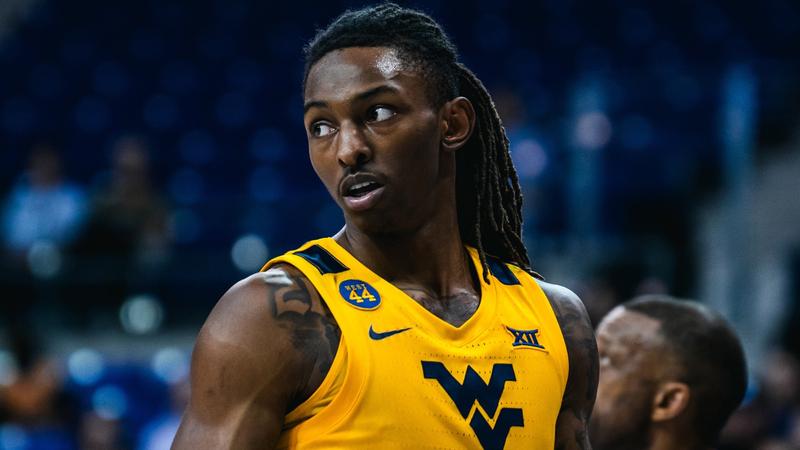
MORGANTOWN, W.Va. – West Virginia University guard Javon Small was taken in the second round of this year’s NBA Draft by the Memphis Grizzlies.
He was the 48th overall choice.
Small enjoyed a breakout season at West Virginia in 2025 that saw him average 18.6 points, 5.6 assists, 4.1 rebounds and 1.5 steals during his lone year with the Mountaineers.
His season-high 31 points were crucial in WVU’s overtime victory over Gonzaga in the Bahamas. He also scored West Virginia’s final seven points in a 62-61 upset victory at Kansas – the Mountaineers’ first-ever win in Allen Fieldhouse – and he was dominant in a 64-57 victory over second-ranked Iowa State by scoring a game-high 27 points.
“One of the most athletic guards in this entire draft,” ESPN college basketball analyst Jay Bilas said. “He’s a primary ballhandler who can create. He’s quick. He’s crafty and then defensively, he’s really good at the point of attack.
“He had 68 points in clutch time so he’s really good and when the lights are on, he shows up,” Bilas added.
Small, listed at 6-foot-3 but measuring 6-feet-1 barefoot at this year’s NBA Draft Combine, played two years at East Carolina and one at Oklahoma State, where he averaged 15.1 points per game for the Cowboys in 2024.

In 97 career college games, the South Bend, Indiana, resident scored 1,380 points, handed out 424 assists and grabbed 374 rebounds.
“(The Grizzlies) are getting a competitor, a hard worker and somebody who is going to bring positive energy every single day. They are just going to get a dog,” Small said.
Draft experts noted his strong performance in agility and shooting drills at this year’s NBA Draft Combine held this spring in Chicago, which likely offset some concerns about his lack of height and long-range shooting consistency.
On3’s James Fletcher had Small ranked No. 47 overall on his final draft board; ESPN.com NBA draft analyst Jonathan Givony had Small pegged at No. 48, while Draft Digest had him rated 50th.
Yahoo! Sports draft analyst Kevin O’Connor compared Small to Miami Heat guard Terry Rozier, writing: “Small is an undersized guard who plays bigger than his body thanks to his excellent athleticism and gritty nature. He’s a knockdown shooter off the catch and a solid lead guard, though his lack of size puts a natural cap on his upside.”
There were 59 total selections in this year’s draft.
The last West Virginia University player picked by an NBA team was guard Deuce McBride, who went 36th overall in the second round to the New York Knicks in 2021.
Including Small this year, six Mountaineer players have been taken in the draft since 2008 when forward Joe Alexander went No. 8 overall to the Milwaukee Bucks.
Forwards Da’Sean Butler and Devin Ebanks were taken consecutively at No. 42 by the Miami Heat and No. 43 by the Los Angeles Lakers in the second round in 2010, and guard Jevon Carter was the 32nd overall choice by the Memphis Grizzlies in the 2018 draft.
NIL
Remy Cofield offers insight into role as Arkansas general manager
Remy Cofield was officially hired as Arkansas general manager back on March 24 and has since been working quietly behind the scenes to get acclimated to the new gig. On Thursday, he made his first public comments since being hired on and offered insight into his role and how the athletic department plans to navigate […]

Remy Cofield was officially hired as Arkansas general manager back on March 24 and has since been working quietly behind the scenes to get acclimated to the new gig. On Thursday, he made his first public comments since being hired on and offered insight into his role and how the athletic department plans to navigate this new college landscape.
Cofield, a former Director of Scouting for the Boston Celtics and GM of their G-League affiliate Maine Celtics, was hired to “oversee the strategic allocation of department and affiliate resources to support Razorback head coaches in the acquisition and retention of championship-caliber athletic talent,” according to the official release from the school at the time.
The 12-year NBA executive officially offered a much simpler explanation of his day-to-day role as general manager when speaking for the first time on Thursday afternoon.
“It’s just pick up the pieces where things need to be picked up,” Cofield said. “I said to Hunter when we initially got on with this and started working on things, I just want to help people out. Coaching staff needs something, need advice on a particular rule that we’re looking at, call us up, let’s figure it out. If you want to talk about roster, players, all that stuff.
“If you need connection to somebody that I may have, let’s figure it out. So I think in my role it’s just trying to be a connector in a lot of ways, making sure every staff has what they need from a (revenue) share standpoint. But also brought up to speed on the new rules that are coming through, that we’re all kind of learning right now and we don’t have a lot of answers to. But we’re trying to get ahead of it and be proactive in that space.”
One of the key reasons why the general manager role has taken off in college athletics is because coaches were being tasked with handling more and more off-field issues with NIL and transfer portal. On top of their day-to-day operations as coaches, they would also have to negotiate NIL agreements and deal with player representatives. Sam Pittman mentioned his hopes for Cofield taking some of those things off his plate back during spring drills.
“Since we’ve been here, I’ve kind of been the good guy and the bad guy,” Pittman said. “Good, if you come in and you want X amount of money and all that and we feel like that’s the worth. They’re gonna go to him, so I think that buffering system is going to help me tremendously. And it’s personal, you know. Guys are gonna leave, you understand why, but then it becomes personal. We need to take that part out of the game, to me.”
Now, as Cofield’s explained on Thursday, his role is to sort of be the “bad guy” and shield coaches from athletes who are unhappy with rev-share or NIL agreements. That allows the coaches to focus more on what they’ve been hired to do.
“I don’t mind having tough conversations, and I don’t think that’s a bad thing, either,” Cofield explained. “I think when you want an answer to a question and it’s negative, that’s just what it is. I think when Sam has those conversations, we want to make sure Sam is a good guy coaching every single day, paying attention to his players’ needs from a football standpoint, and just keeping the money stuff out of it.
“I think that helps him, but again, that’s his situation. Every situation is different. I think for Sam, that helps him in a lot of ways, just to be able to connect with those guys on a personal level and be the person he is on a day-to-day basis. Allow me to be the one to have those tough conversations and say, ‘We can’t do this. We can’t do that’. Or sometimes, deliver some good news. ‘We can do this. We can do that’. I think it’s been positive for him and I hope it continues to be positive.”
On June 6, the House v. NCAA settlement was approved, the landmark decision now allows schools to pay players directly beginning on July 1. Cofield has only been at Arkansas since March and has been focused on getting acclimated to the new role while preparing for what’s to come after July 1, but he believes that the Razorbacks will be more competitive in this new landscape.
“I’m trying these last two months to just kind of get my feet wet,” Cofield said. “I was telling [Kyle Parkinson] this is the second time I’ve been down here you know, seeing the area and I didn’t really know where the media room was so, that’s the biggest thing for me. But coming down to Arkansas, it’s been fantastic ever since I stepped foot down here. People have been really, really nice.
“Our fanbase wants us to be extremely competitive. I’m extremely competitive, all of our coaches are extremely competitive. We’re going to get the right players for Arkansas, that’s the most important for us. We’ll compete with some of the money issues that are going to be out there. I think a lot of the cap stuff that we’re going to see going forward is going to level it out a little more so that we can compete from a money standpoint. But I think it starts with the players, we’ve got to get the right players for us.”
FLASH SALE – HawgSports is 50% off!! For a limited time, join the No. 1 independent source on Arkansas sports and recruiting for half the regular rate!! Get unmatched insider Razorback coverage for the equivalent of $1.03 a week, $4.48 a month and billed at only $53.70 for the entire year!! There is no promo code required for this offer, just HIT THIS LINK now, and you’ll be good to go. This offer ends soon!!
NIL
Jay Bilas shares how NIL has driven down value of second round in NBA Draft
NIL has affected everything in college sports since it began nearly four years ago in 2021. The pros have since felt those effects as well, specifically in their drafts, with how good some players have it in collegiate athletics now. Jay Bilas explained the impact of name, image, and likeness on the NBA Draft going […]
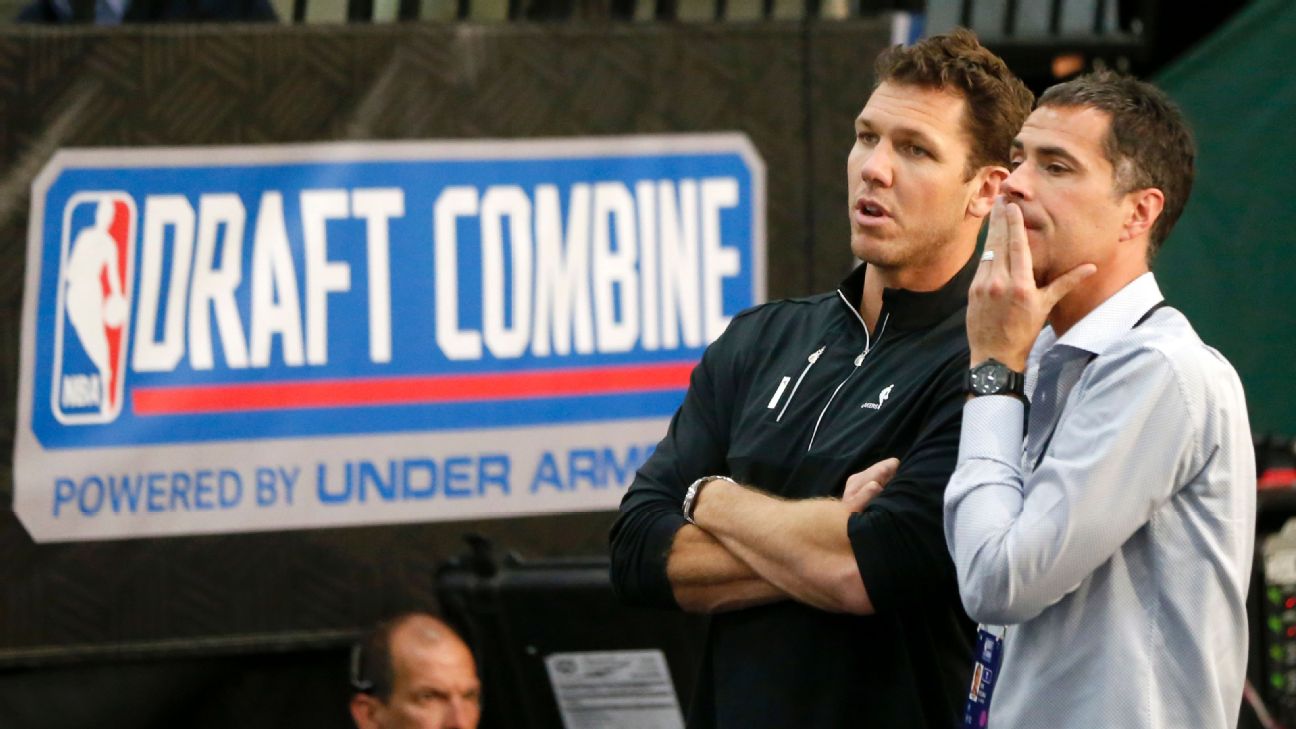
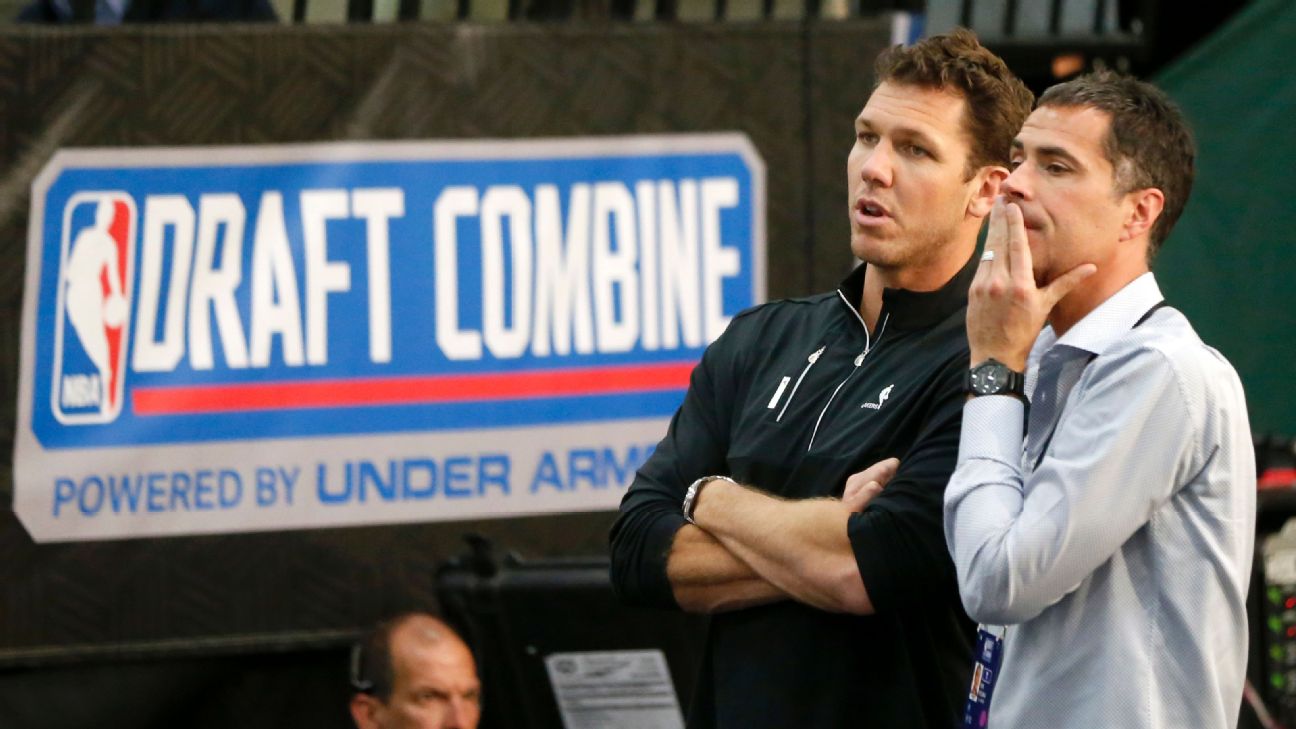
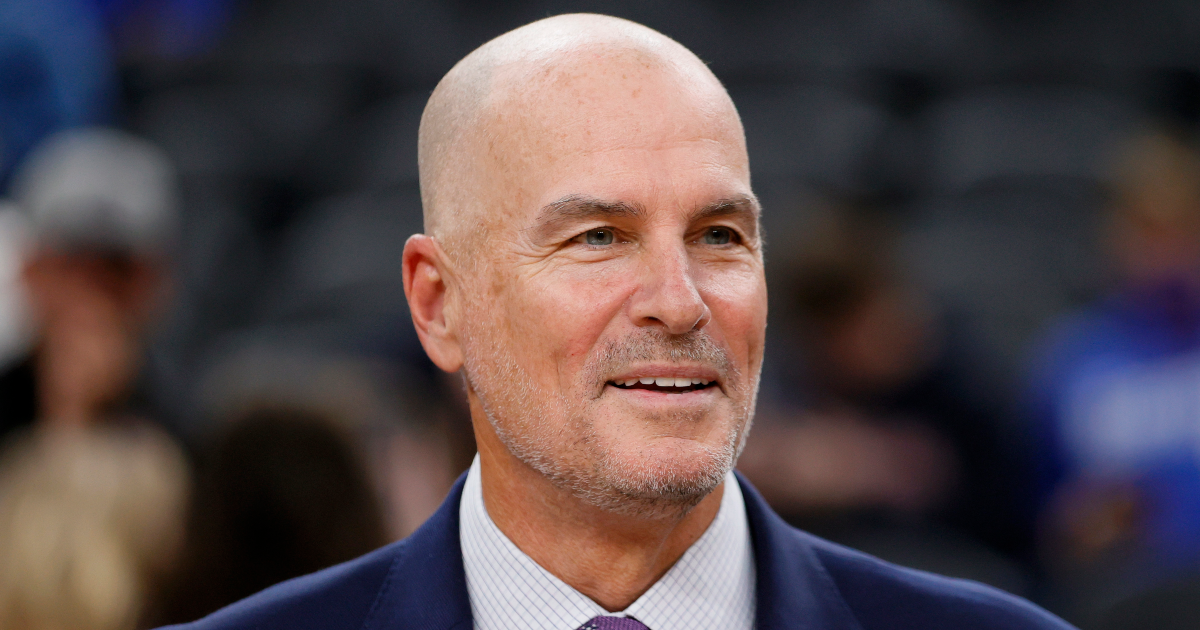
NIL has affected everything in college sports since it began nearly four years ago in 2021. The pros have since felt those effects as well, specifically in their drafts, with how good some players have it in collegiate athletics now.
Jay Bilas explained the impact of name, image, and likeness on the NBA Draft going into tonight’s second round coverage while on ‘The Pat McAfee Show’ on Thursday. He felt it had steadily decreased the value that teams can find in the second round with prospects who have remaining eligibility that could be selected in those spots, deciding to withdraw their names and return to college rather than be picked in the association.
“One thing you’re seeing with NIL now? Players are not only going to college. They’re staying in college longer,” Bilas said. “The second round is probably not – I haven’t like, you know, done this with a microscope. But the second round this year is probably not as good as the second round, like, two or three years ago because a lot of second-round picks are guys that would’ve come out two or three years ago, are staying in school because they’re going to make way more money staying in school.”
“If they’re not going to be first-round picks, they’re staying in (college),” Bilas said.
As many as 106 players, whether from college or international, entered their names to be early-entry candidates as part of this draft. Then, by the withdrawal deadline for college players on May 28th, 50 pulled their names out of this class.
Among the most notable on that list were Houston’s Milos Uzan, Duke’s Isaiah Evans, Florida’s Alex Condon, Boogie Fland, and Reuben Chinyelu, Kentucky’s Otega Oweh and Jaland Lowe, Auburn’s Tahaad Pettiford, Alabama’s Labaron Philon, Arkansas’ Karter Knox, and NC State’s Darrion Williams. Those are several players who will make the difference for potential national title contenders. The rest of the names still then include ones who will absolutely affect their respective programs as well in ’25-’26.
Several of those names could have been or would have been selected tonight in the second round, or maybe even last night in the first round for some. However, name, image, and likeness has made it a much different decision-making process considering what those players could make over a year back in college than their first as rookies in the NBA.
First round picks make several million dollars on guaranteed deals as rookies, but second-round picks aren’t on the same wage scale, meaning less guaranteed money for contracts closer to the minimum or ones for a two-way signing. That’s the same value or less than some of them would make back in college, based on the compensation at their respective programs.
There are still good players to be found by franchises in the second round, with that on display tonight as 29 more selections will be made. Still, as compared to previous drafts in years past, there may be less talent available this year and in ones moving forward, as a result of NIL.
NIL
Jay Bilas shares how NIL has driven down value of second round in NBA Draft
NIL has affected everything in college sports since it began nearly four years ago in 2021. The pros have since felt those effects as well, specifically in their drafts, with how good some players have it in collegiate athletics now. Jay Bilas explained the impact of name, image, and likeness on the NBA Draft going […]

NIL has affected everything in college sports since it began nearly four years ago in 2021. The pros have since felt those effects as well, specifically in their drafts, with how good some players have it in collegiate athletics now.
Jay Bilas explained the impact of name, image, and likeness on the NBA Draft going into tonight’s second round coverage while on ‘The Pat McAfee Show’ on Thursday. He felt it had steadily decreased the value that teams can find in the second round with prospects who have remaining eligibility that could be selected in those spots, deciding to withdraw their names and return to college rather than be picked in the association.
“One thing you’re seeing with NIL now? Players are not only going to college. They’re staying in college longer,” Bilas said. “The second round is probably not – I haven’t like, you know, done this with a microscope. But the second round this year is probably not as good as the second round, like, two or three years ago because a lot of second-round picks are guys that would’ve come out two or three years ago, are staying in school because they’re going to make way more money staying in school.”
“If they’re not going to be first-round picks, they’re staying in (college),” Bilas said.
As many as 106 players, whether from college or international, entered their names to be early-entry candidates as part of this draft. Then, by the withdrawal deadline for college players on May 28th, 50 pulled their names out of this class.
Among the most notable on that list were Houston’s Milos Uzan, Duke’s Isaiah Evans, Florida’s Alex Condon, Boogie Fland, and Reuben Chinyelu, Kentucky’s Otega Oweh and Jaland Lowe, Auburn’s Tahaad Pettiford, Alabama’s Labaron Philon, Arkansas’ Karter Knox, and NC State’s Darrion Williams. Those are several players who will make the difference for potential national title contenders. The rest of the names still then include ones who will absolutely affect their respective programs as well in ’25-’26.
Several of those names could have been or would have been selected tonight in the second round, or maybe even last night in the first round for some. However, name, image, and likeness has made it a much different decision-making process considering what those players could make over a year back in college than their first as rookies in the NBA.
First round picks make several million dollars on guaranteed deals as rookies, but second-round picks aren’t on the same wage scale, meaning less guaranteed money for contracts closer to the minimum or ones for a two-way signing. That’s the same value or less than some of them would make back in college, based on the compensation at their respective programs.
There are still good players to be found by franchises in the second round, with that on display tonight as 29 more selections will be made. Still, as compared to previous drafts in years past, there may be less talent available this year and in ones moving forward, as a result of NIL.
NIL
College football 26 toughest stadium rankings says no to Hogs, yes to more cowbell
When EA Sports released its first college football video game in over a decade, Donald W. Reynolds Razorback Stadium ranked in the top 25 hardest home-field advantages in the game. In College Football 26, that’s no longer the case. Arkansas football dropped from College Football 26 toughest places to play Arkansas didn’t make the cut […]
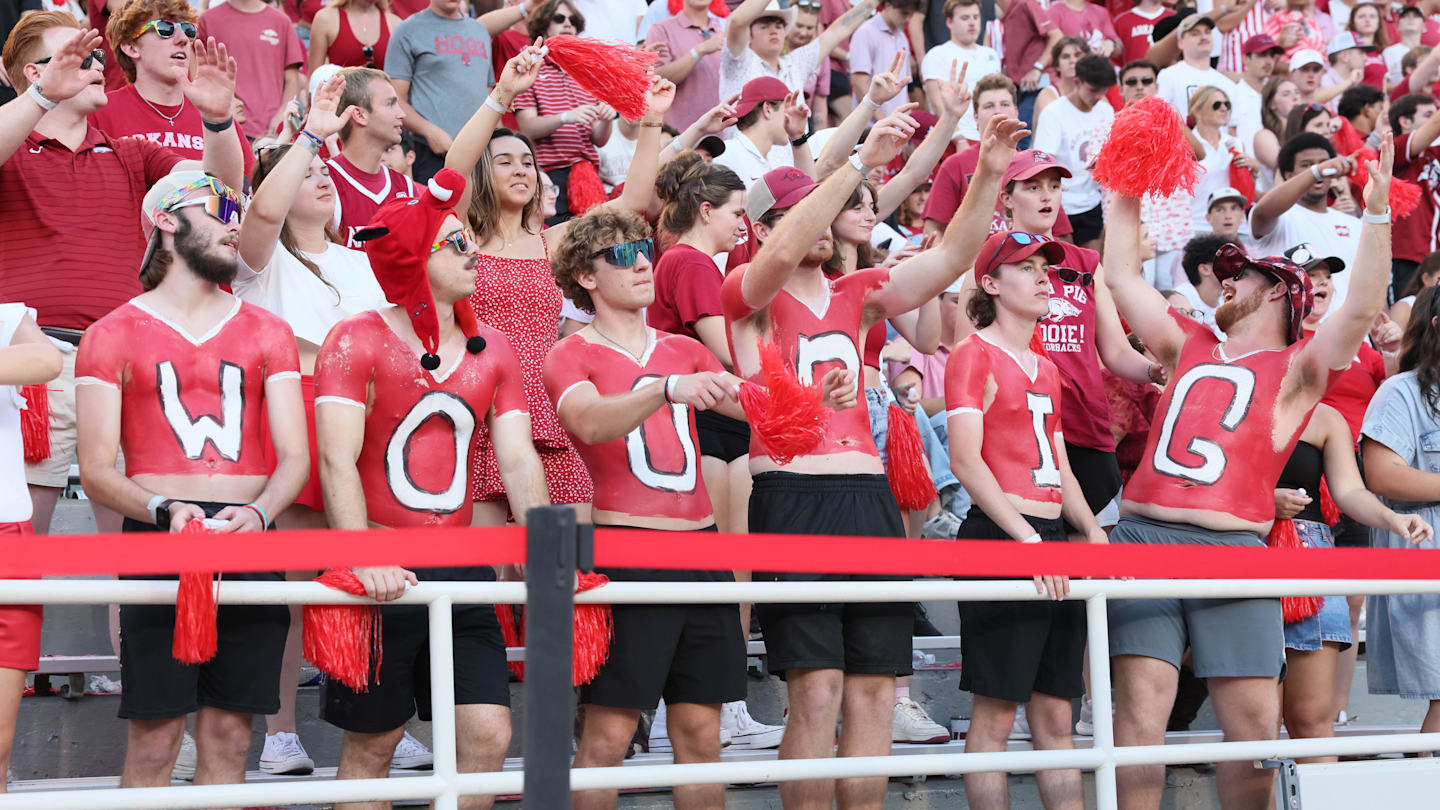
When EA Sports released its first college football video game in over a decade, Donald W. Reynolds Razorback Stadium ranked in the top 25 hardest home-field advantages in the game. In College Football 26, that’s no longer the case.
Arkansas football dropped from College Football 26 toughest places to play
Arkansas didn’t make the cut this year, but to be fair, it was shocking they made it in the first place. Over the last ten seasons, Arkansas has accumulated a home record just above .500 (35-34). Still, it wasn’t the most criticized choice, with Texas A&M coming in first place last year. Fans pointed out that the Aggies had recently lost to Appalachian State when the list was released, and it appears that EA Sports has righted their wrongs. Kyle Field now sits at No. 11.
However, the new ranking has its share of problems. The last five are especially heinous. Norte Dame comes in at No. 21, which is completely ridiculous. The Fighting Irish may be overrated most seasons, but they’re still excellent and have only had 12 losses in Notre Dane since the 2015-16 season.
It’s completely unrealistic to sandwich Notre Dame Stadium between Rice-Eccles Stadium (Utah) and Carter-Finely Stadium (NC State). No. 2022, 23, and 25 are off-the-wall picks, too, but for a different reason. With NC State at No. 22 and Oklahoma State at No. 23, they don’t exactly scream “terrifying home environments.”
Sure, Cowboy fans are basically on top of the players on the sideline, but Arkansas, which is annually a bottom-third SEC, nearly wiped the floor with them in Stillwater until the Hogs shot themselves in the foot. And OK State fans can’t quite claim the environment helped because Arkansas continued to do it all season, including at home.
Mississippi State comes in at No. 25, but let’s be real—it’s just because of the cowbells. EA Sports has taken too much advice from Christopher Walken. We, in fact, don’t need more cowbells. Davis Wade Stadium is hard to play in because opposing players can’t hear themselves talk, but that hasn’t stopped them from beating Mississippi Stat. The Bulldogs have a slightly higher home winning percentage (.588) than Arkansas.
Why does it matter?
In College Football 26, home-field advantage isn’t just cosmetic—it’s game-changing. Just like in College Football 25, EA Sports is turning up the intensity by making crowd energy and stadium atmosphere directly impact gameplay, only more so for its newest edition.
Players on the road will face a wave of immersive challenges like distorted play art, jittery screen shakes, blurred routes, and drops in confidence and composure. The rankings now carry real weight, as playing in a top-tier environment could rattle even the most composed athletes, just like on a real Saturday in the fall.
College Football 26 toughest places to play top 25 rankings
- Tiger Stadium: LSU
- Beaver Stadium: Penn State
- Ohio Stadium: Ohio State
- Stanford Stadium: Georgia
- Bryant -Denney Stadium: Alabama
- Memorial Stadium: Clemson
- Ben Hill Griffin Stadium: Florida
- Gaylord Family-Oklahoma Memoria Stadium: Oklahoma
- Autzen Stadium: Oregon
- Michigan Stadium: Michigan
- Kyle Field: Texas A&M
- Neyland Stadium: Tennessee
- Darrel K. Royal Texas Memorial Stadium: Texas
- Doak S. Campbell Stadium: Florida State
- Camp Randall Stadium: Wisconsin
- Williams-Brice Stadium: South Carolina
- Jordan-Hare Stadium: Auburn
- Husky Stadium: Washington
- Kinnick Stadium: Iowa
- Rice-Eccles Stadium: Utah
- Notre Dame Stadium: Notre Dame
- Carter-Finley Stadium: NC State
- Boon Pickens Stadium: OK State
- Spartan Stadium: Michigan State
- Davis Wade Stadium: Mississippi State
NIL
LSU baseball adds elite relief pitcher from the transfer portal
LSU baseball continued its transfer portal reload on Thursday. Less than a week after winning a national championship, Jay Johnson and the Tigers earned a commitment from North Dakota State transfer pitcher Danny Lachenmayer. Lachenmayer is the third transfer addition of the cycle for LSU, joining infielders Seth Darder and Brayden Simpson. Lachenmayer, a lefty, […]
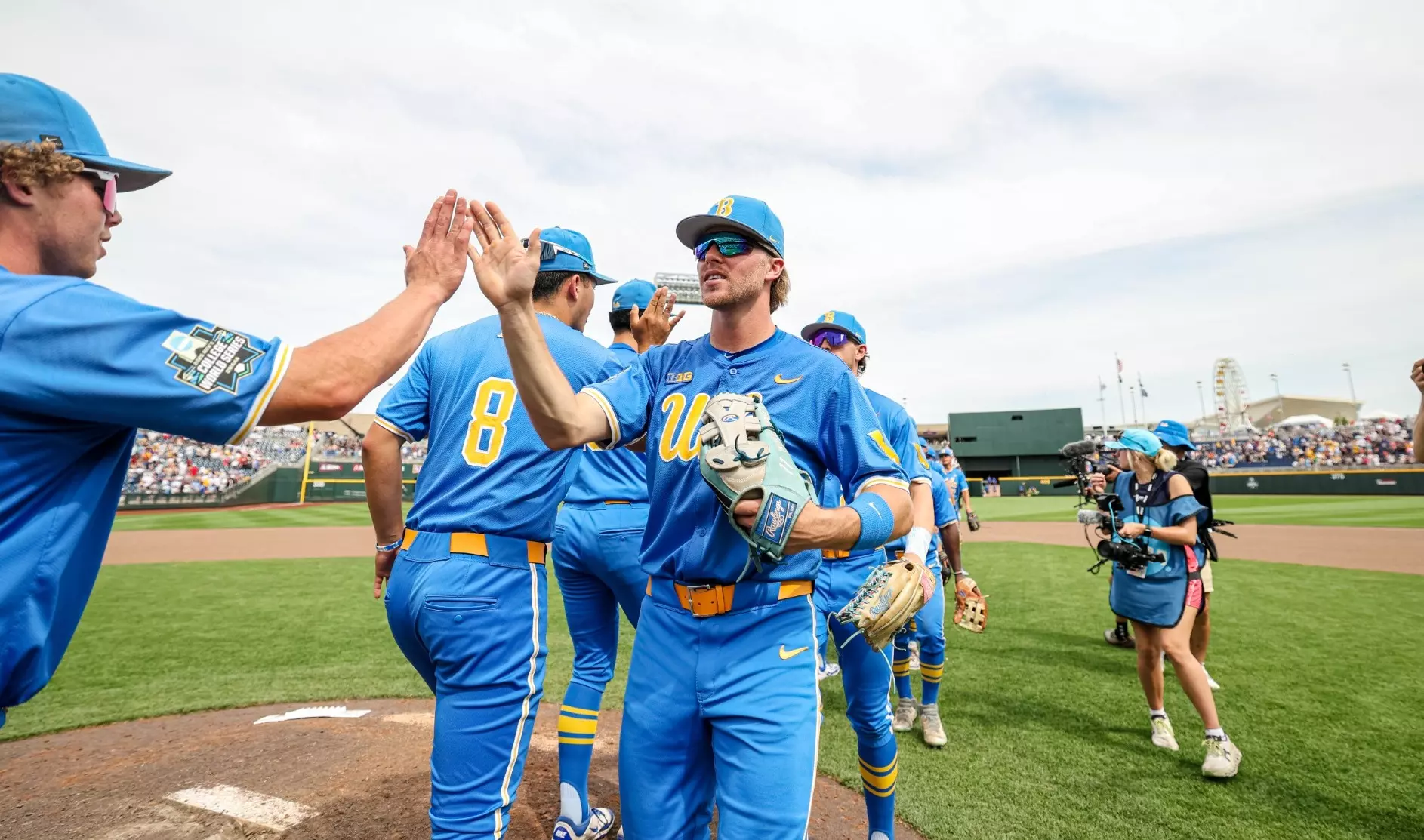


LSU baseball continued its transfer portal reload on Thursday. Less than a week after winning a national championship, Jay Johnson and the Tigers earned a commitment from North Dakota State transfer pitcher Danny Lachenmayer.
Lachenmayer is the third transfer addition of the cycle for LSU, joining infielders Seth Darder and Brayden Simpson.
Lachenmayer, a lefty, worked as a reliever for NDSU in 2024. The Minnesota native tossed 38 innings with a 2.37 ERA. He was a strikeout machine, totaling 56 K’s out of the pen. Lachenmayer allowed just 10 earned runs all year and recorded nine saves.
LSU’s 2026 bullpen will look different as Lachenmayer fills a key need. LSU is projected to bump Casan Evans into the starting rotation and lose Chase Shores to the MLB Draft. Zac Cowan also has a decision to make regarding the draft, and even if Cowan is back, there’s a strong chance he’s a starter. Lachenmayer gives Johnson and the Tigers a high-leverage arm with proven experience.
North Dakota State made the NCAA Tournament this season, and Lachenmayer got to pitch in the regional, throwing 3.2 scoreless innings vs. quality competition.
Lachenmayer broke the news with a post on social media.
-

 Motorsports2 weeks ago
Motorsports2 weeks agoNASCAR Weekend Preview: Autódromo Hermanos Rodríguez
-

 Motorsports2 weeks ago
Motorsports2 weeks agoNASCAR Through the Gears: Denny Hamlin has gas, a border needs crossing, and yes, that’s a Hemi
-

 NIL3 weeks ago
NIL3 weeks agoShai Gilgeous
-

 Motorsports2 weeks ago
Motorsports2 weeks agoNASCAR Race Today: Mexico City start times, schedule and how to watch live on TV
-

 High School Sports3 weeks ago
High School Sports3 weeks agoHighlights of the Tony Awards
-

 Health2 weeks ago
Health2 weeks agoGymnast MyKayla Skinner Claims Simone Biles 'Belittled and Ostracized' Her amid Riley …
-
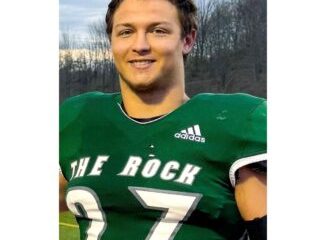
 Health3 weeks ago
Health3 weeks agoParents Create Fund in memory of son, raise awareness about suicide and mental health
-

 NIL2 weeks ago
NIL2 weeks agoTennessee law supersedes NCAA eligibility rule
-

 College Sports2 weeks ago
College Sports2 weeks agoFisk to discontinue history-making gymnastics program after 2026 | Area colleges
-

 Professional Sports3 weeks ago
Professional Sports3 weeks agoUFC 316



































